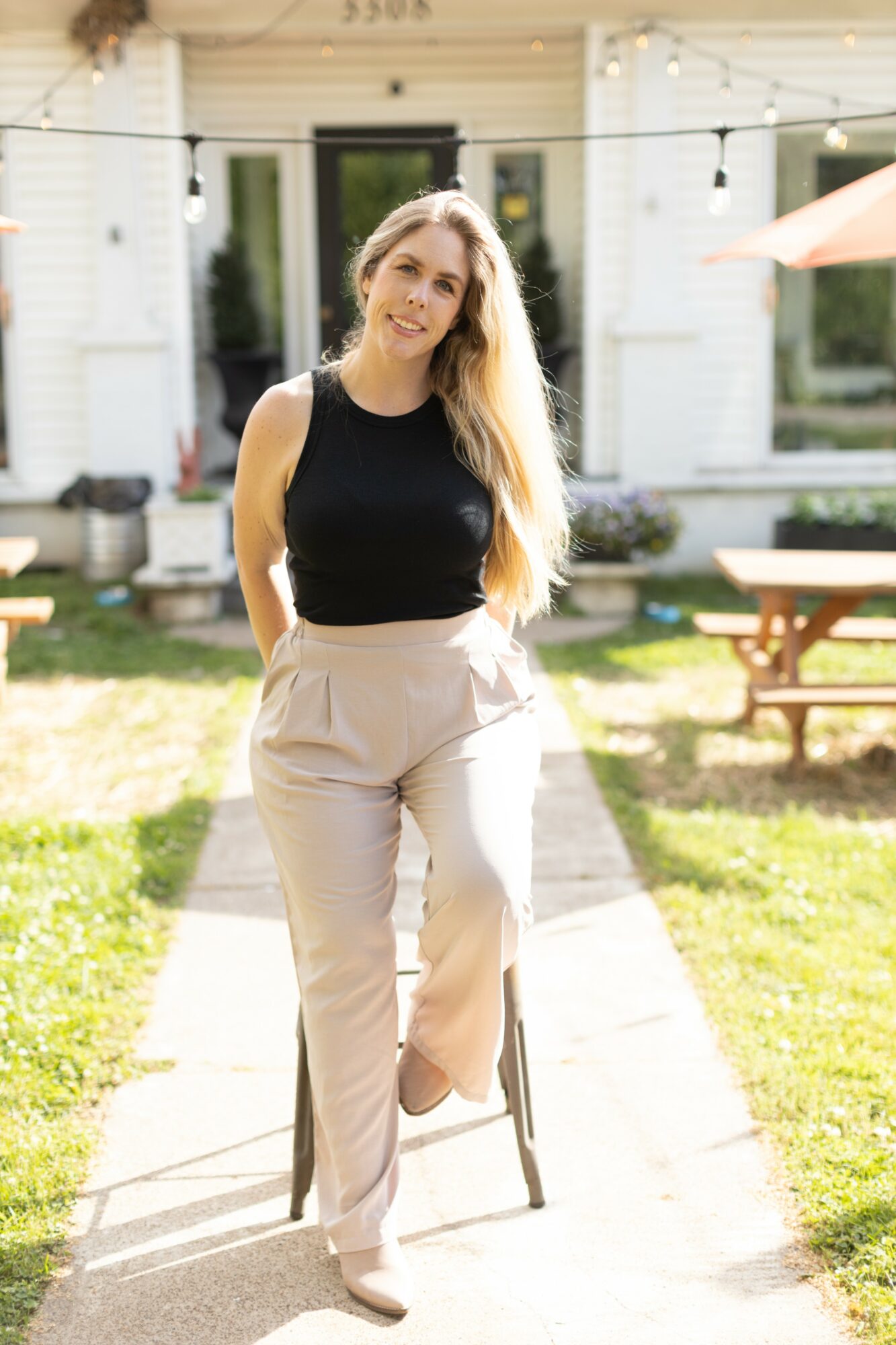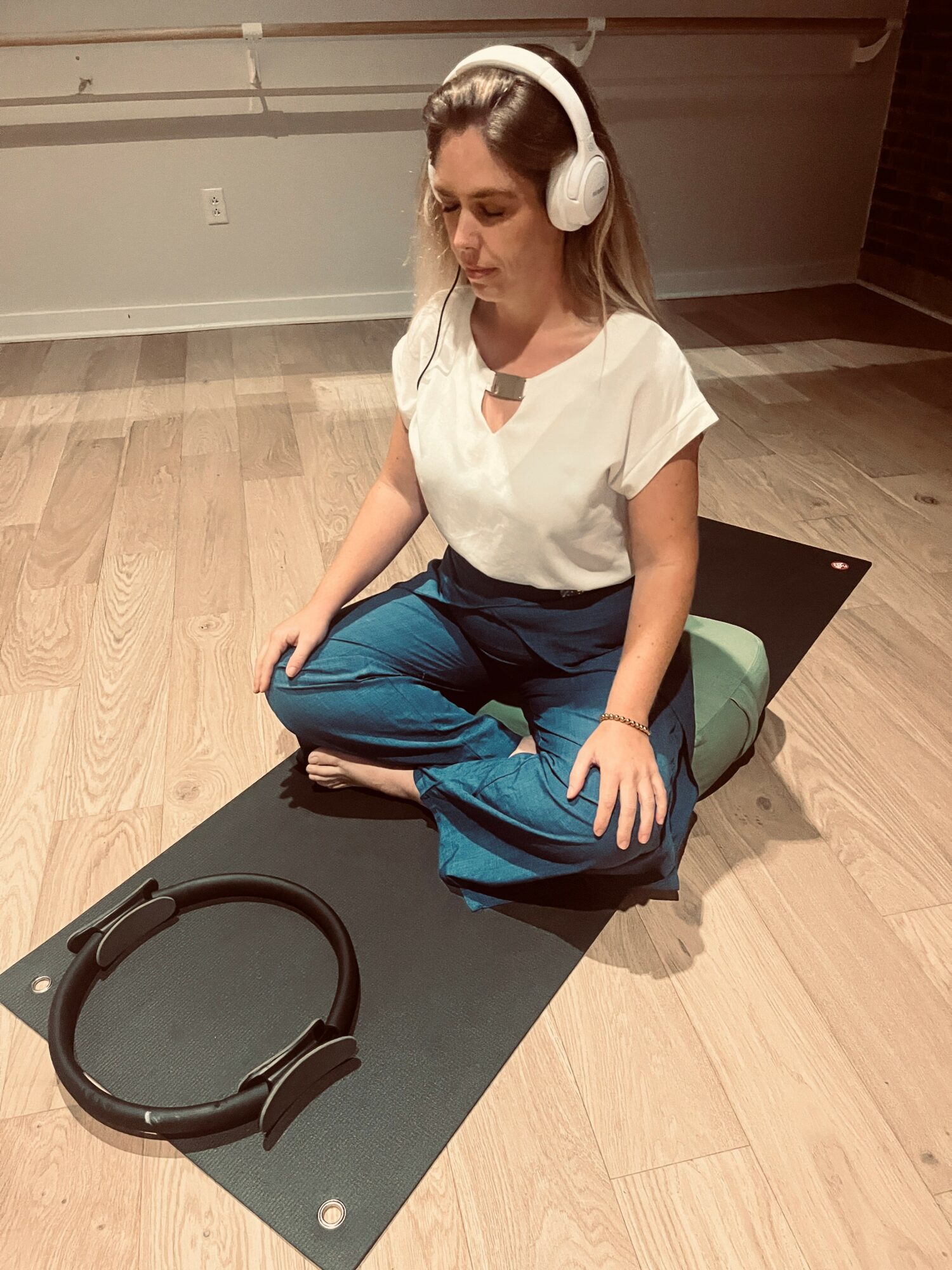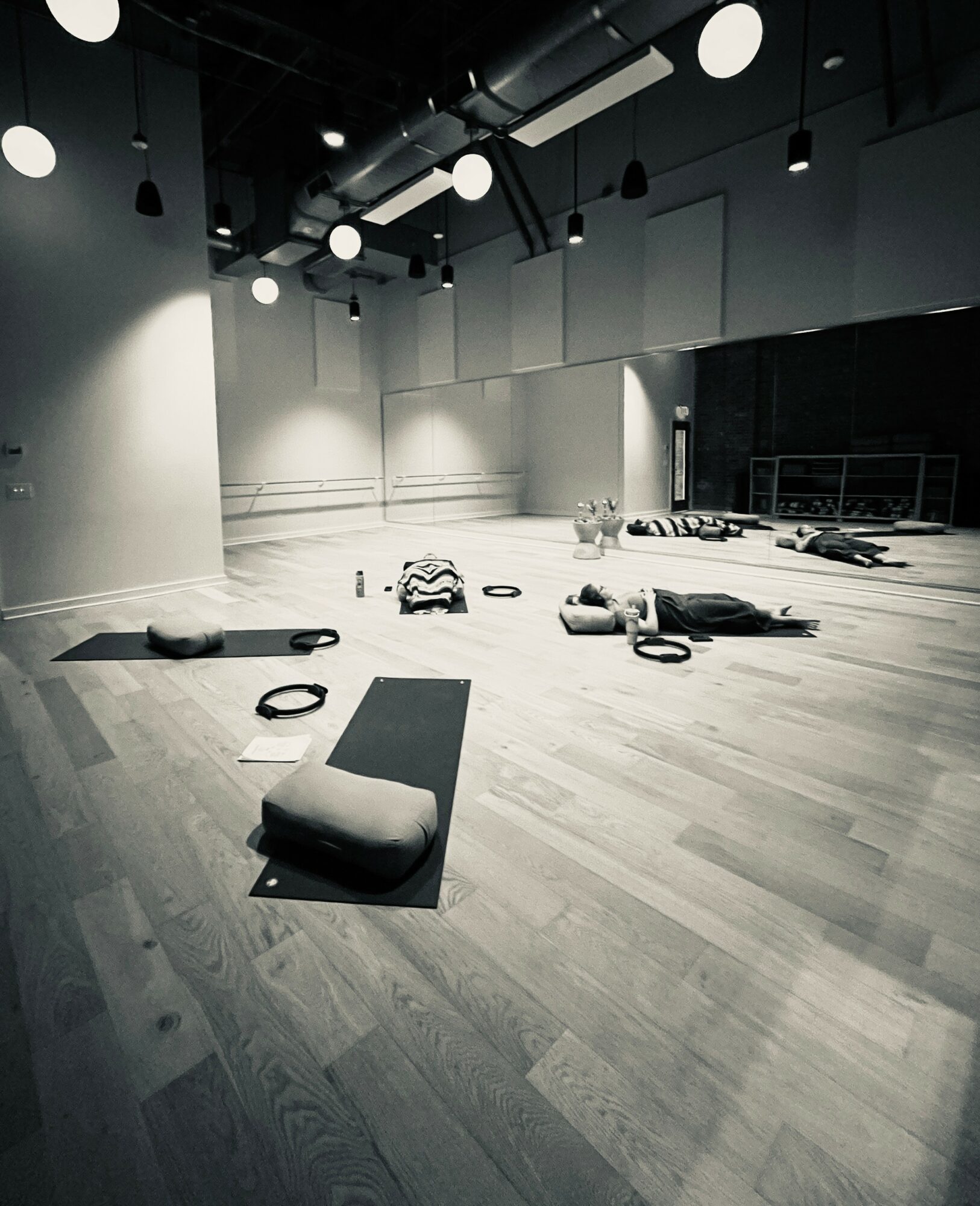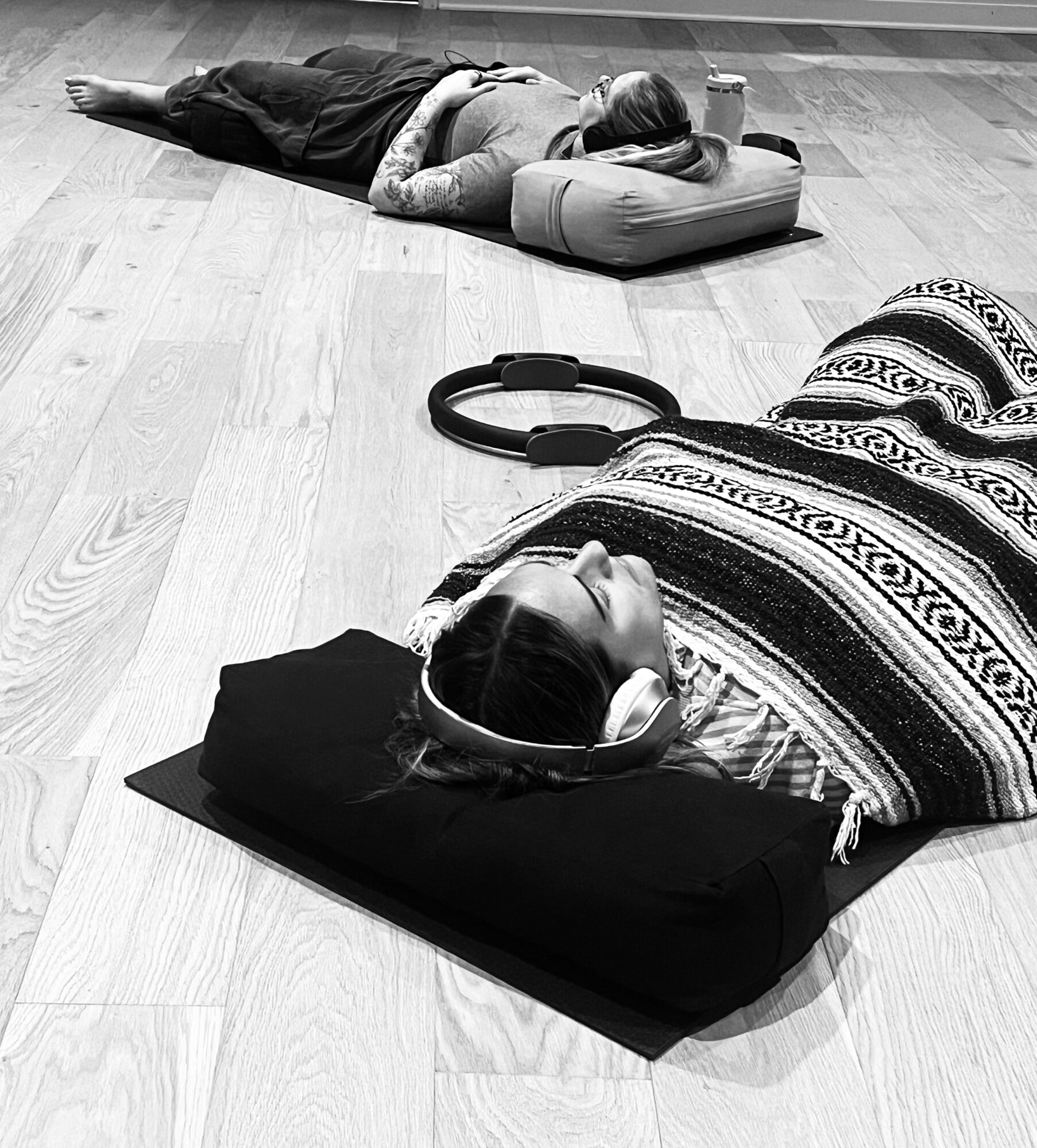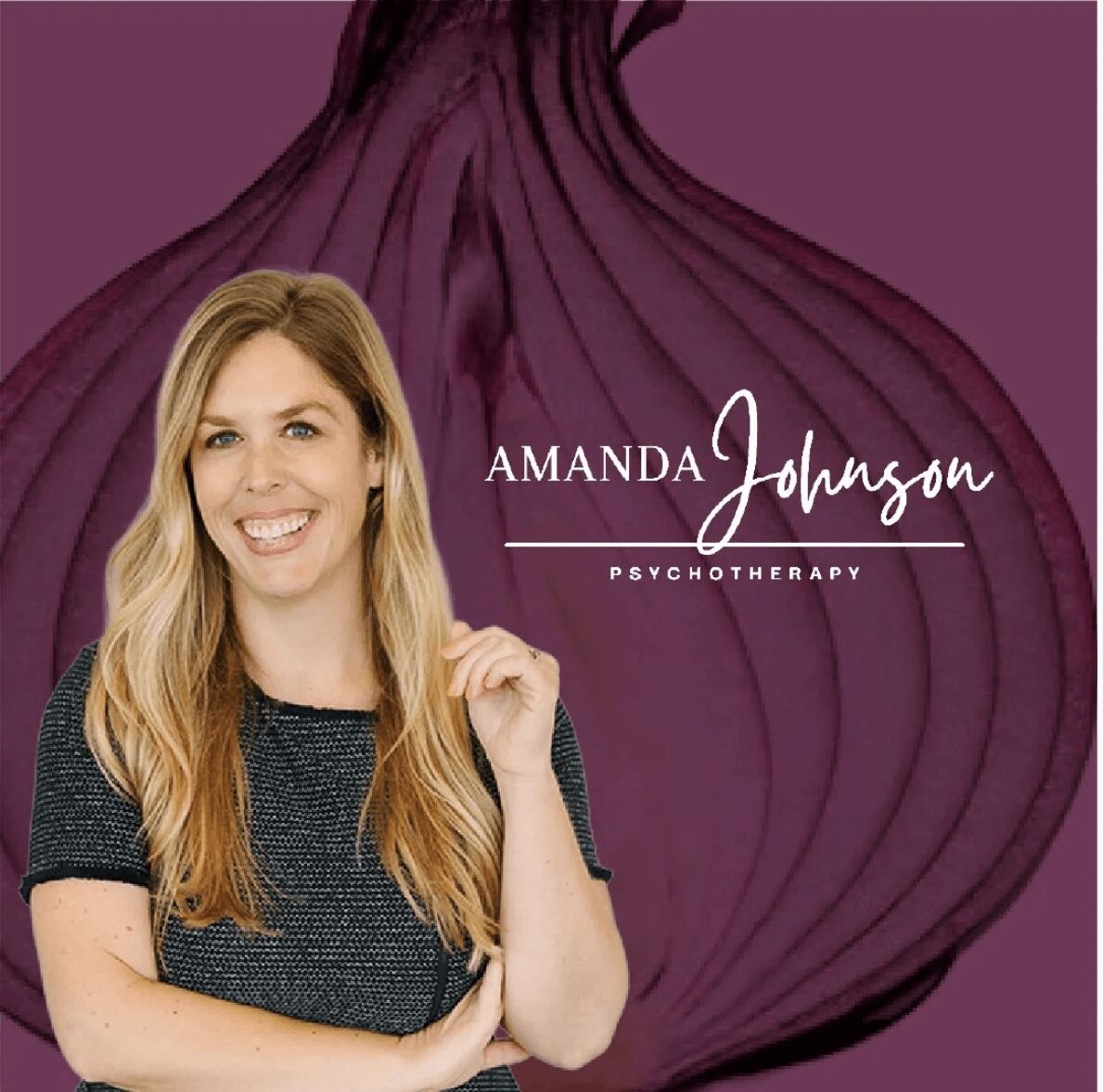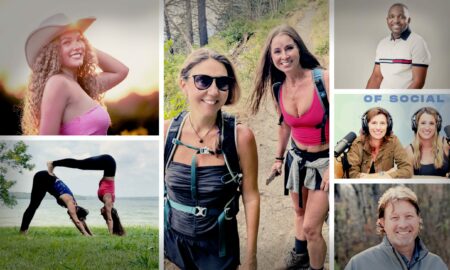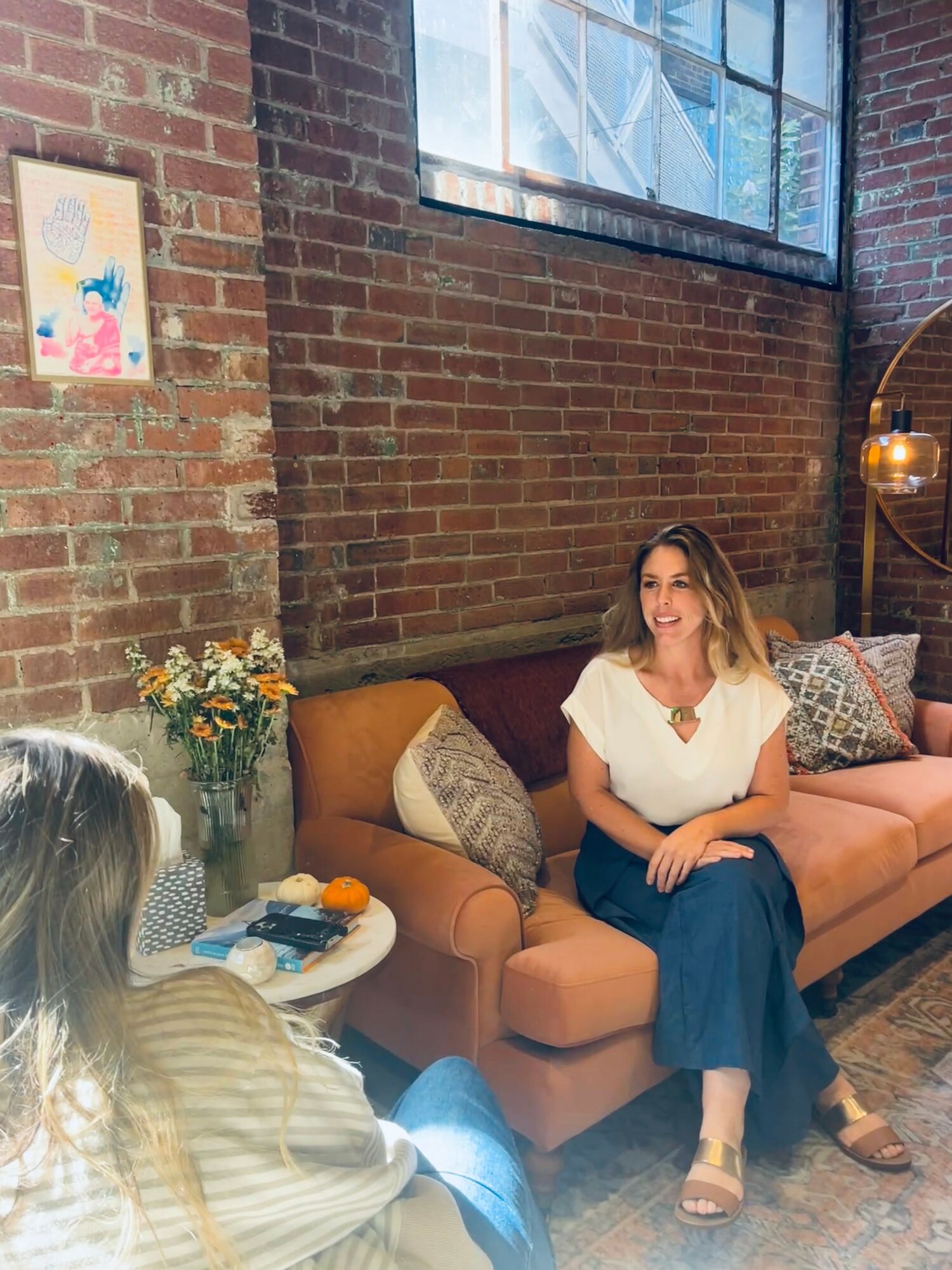

Today we’d like to introduce you to Amanda Johnson.
Hi Amanda, so excited to have you on the platform. So before we get into questions about your work-life, maybe you can bring our readers up to speed on your story and how you got to where you are today?
I started my career in social work because I’ve always been drawn to being of service and it felt like an intuitive, natural fit. I think my educational choice was influenced by something deeper about my purpose and calling. I’ve always found meaning in helping and volunteering and engaged in these activities through school, church, and Girl Scouting. I’m one of those “spongy people” who senses and feels deeply when around other people which is both a superpower and can sometimes feel like my achilles heel as well.
As I grew in the field, I realized that traditional settings where most social workers practice often operate within larger healthcare systems that can feel limiting. I wanted more freedom to bring creativity, intuition, and depth into the work. So in 2018, I took the leap into full-time private practice. There’s a rebellious, adventurous part of me that thrives on autonomy and making sure my work reflects my values and can shape shift as I grow and learn.
Many formal mental health teachings focus on reducing symptoms and helping people stay engaged and functional in the many domains of life. While I appreciate those tools, I had a deeper curiosity about why we suffer and how we heal.
That curiosity led me to study trauma and the nervous system — to really understand how our brains, bodies, and relationships shape each other both in states of health and when people have gone through a series of overwhelming events or circumstances.
The more I learned, the more fascinated I became with how healing isn’t just about insight or willpower; it’s about safety, connection, and the patterns we carry in our bodies. When clients are ready, I guide them to look at how we can intervene in creating more safety and capacity in our physiology to influence how our autonomic nervous system functions. Sometimes that includes using non-ordinary states of consciousness to access and rewire core beliefs, giving people a felt sense of possibility that talking alone can’t always reach.
Would you say it’s been a smooth road, and if not what are some of the biggest challenges you’ve faced along the way?
Working in a healing profession is anything but smooth, and adding self-employment into the mix creates a whole new layer of challenge. I’ve had seasons that felt like burnout, or moments when I wondered if I was truly cut out for this work. Yet in hindsight, each of those low points marked an important turning point.
In the early years, the discomfort pushed me to change environments. I sought out healthier systems, better leadership, and spaces where therapy could be practiced with more integrity and alignment. Later on, those same feelings of stuckness became catalysts for growth, leading me to new trainings or approaches that filled in missing pieces of my skill set.
The hard moments have also been times to hold up a mirror to myself through my own personal work. I had to look at my own patterns and ask, What is this trying to teach me about how I need to evolve? I hold myself to the same standard I ask of my clients: to keep meeting discomfort with curiosity, and to trust that there is a message in uncomfortable feelings that is worth slowing down to untangle.
As you know, we’re big fans of you and your work. For our readers who might not be as familiar what can you tell them about what you do?
I specialize in integrative trauma therapy which focuses on helping people move beyond insight into real, embodied change. I also work with couples during critical relationship moments in order to navigate high-stakes crossroads with clarity and compassion. My work combines Somatic Experiencing, EMDR, Relational Life Therapy, and advanced modalities like the Safe and Sound Protocol and Ketamine-Assisted Psychotherapy.
What sets my approach apart is that it bridges science and the deeply human side of transformation. It’s not about fixing what’s broken, but remembering what’s possible when safety and connection are restored. I illuminate the protective strategies your mind can’t see to go beyond conscious blind spots to reveal what’s actually keeping you stuck. I teach clients to understand their own nervous system and body, integrating tools that create change at the physiological level while teaching practical skills for real-world situations.
I teach relational intelligence, not just emotional awareness. Individual healing that doesn’t address how past survival patterns shape current relationships rarely brings lasting freedom. For example, many people live with chronic anxiety or fear that feels disproportionate to the present moment. My goal isn’t just to manage symptoms , but instead to help free the nervous system from old imprints, expand a client’s tolerance for uncertainty, and offer ongoing practices that replace difficult behaviors like control, rigidity, or avoidance with deeper trust and flexibility.
Ultimately, I want people to experience healing that restores connection — both to themselves and to the people who matter most.
How do you think about happiness?
Happiness for me is always found in nature either alone or with good company. I find the wisdom of the patterns of nature to help me fast track into acceptance and coherence. Happiness is part my natural state once I become present.
Contact Info:
- Website: https://www.amandajohnsonlcsw.com
- Instagram: https://www.instagram.com/the_onion_layers/
- LinkedIn: https://www.linkedin.com/in/amanda-johnson-41228689
- Other: https://discernmentcounselors.com/directory/59156-1-amanda-johnson/
